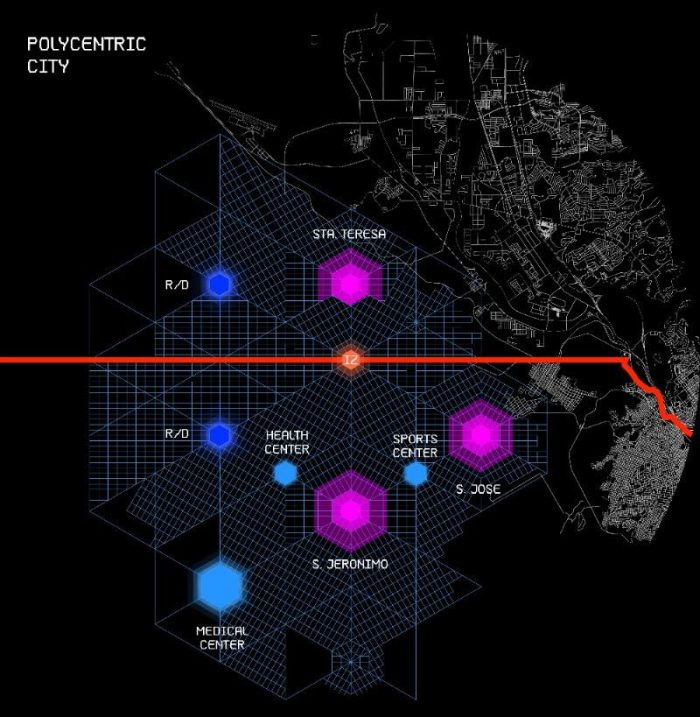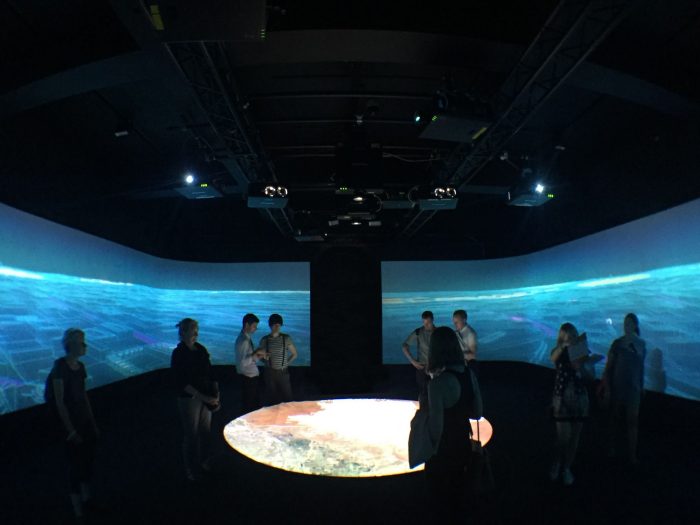Border City presents a vision for a binational city on one of the world’s most important borders, that of the United States and Mexico, whose boundary states are now home to over 100 million people. The concept is rooted in the long history of places where frontiers meet, cities where cultures both clash and blend. This integrated masterplan is conducive to both sides of the border, drawing upon industrial, employment and trade opportunities, while recognizing shortcomings in urban planning. Romero’s urban prototype, with a hexagonal plan, might offer a new model for cities as populations grow, migration increases, and economies continue to globalise.
The proposal comes at a particularly opportune moment when the issues of immigration, border control, and free trade are being debated around the world, often in provacative and incendiary terms and frequently without the basis of facts. The concept is rooted in the long history of places where frontiers meet, cities where cultures both clash and blend to create something altogether unique, places like Hong Kong, Andorra, Baarle Hertog/Baarle Nassau, and Standstead/ Derby Line. Border City is the first integrated masterplan for a binational city conducive to both sides of the border, employing tools of enterprise such as special economic zones to argue for its viability.
“To give physical form to the concept, we’ve situated it between three bordering states of New Mexico, Texas and Chihuahua. The completion of the new inland port of Santa Teresa, the I-10 highway connecting east and west coasts, and the 7 existing border crossings in the area, represents an extraordinary opportunity for logistics and transportation of products in the area.” Romero said
A united vision draws upon industrial, employment and trade opportunities seen in El Paso and Cuidad Juarez’s economic prosperity, while recognizing shortcomings in the urban planning of the region’s sister cities. Economic, social, cultural and environmental sustainability are urban assets and organizing principles for the proposal’s design. Challenging “border situations” are likely to multiply across the world as populations grow, migration increases, and economies continue to globalize. Romero introduces an urban prototype, with a hexagonal plan, that might offer a new model for a rapidly developing world.







